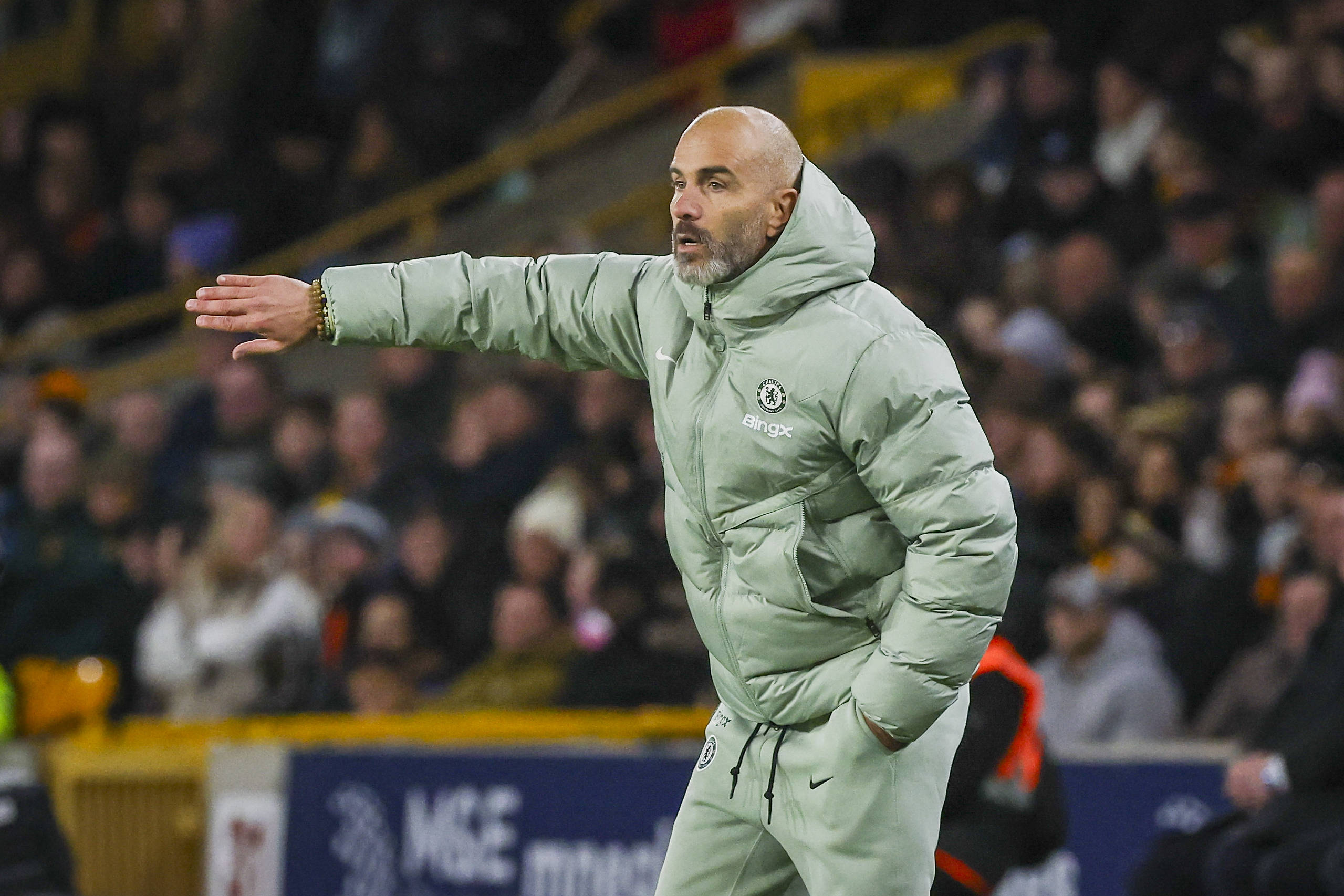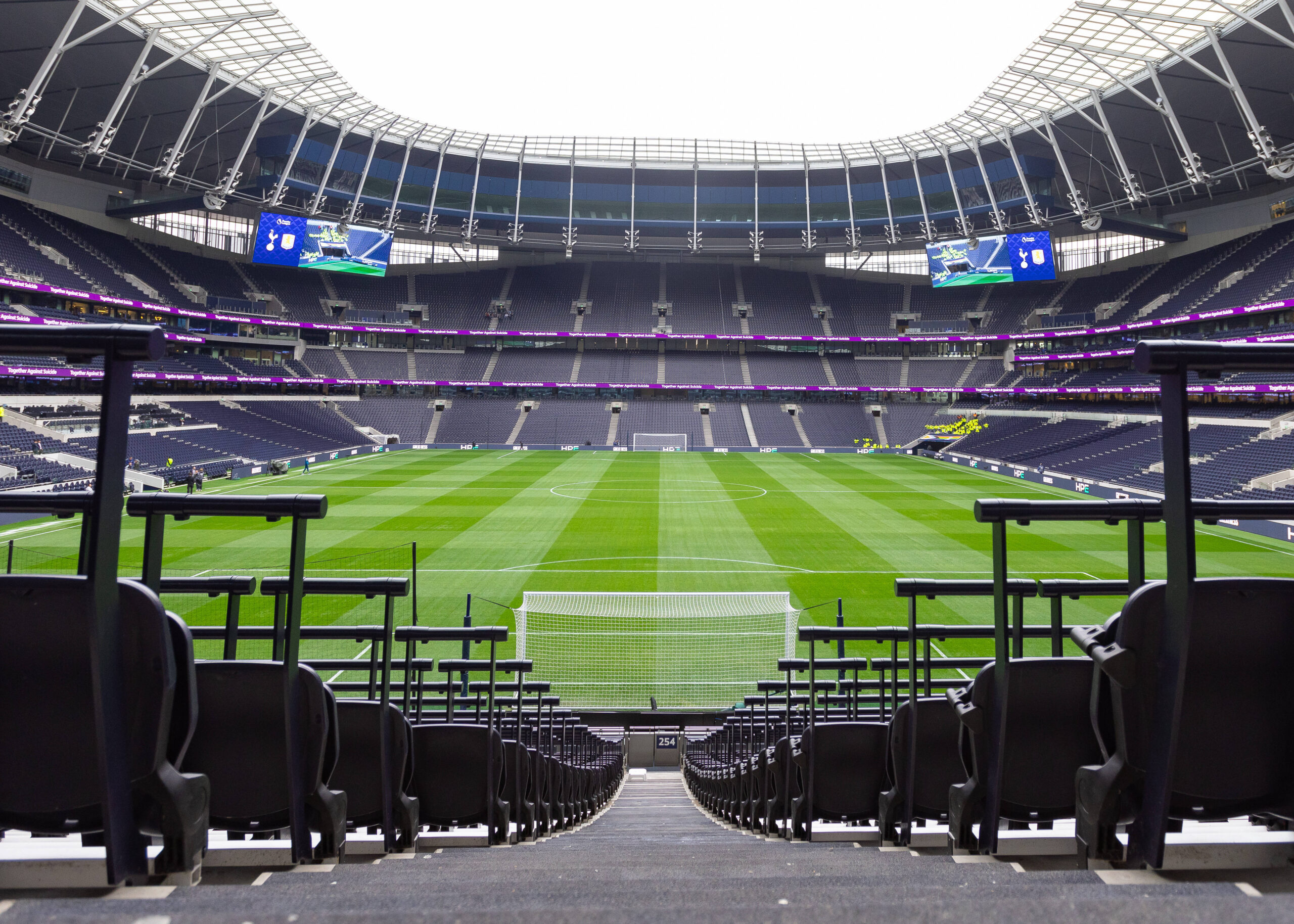Liverpool teams have evolved over the years under Jurgen Klopp as he maneuvered the transfer market with a limited financial budget. The most recent edition of the Reds involved a colossal transformation in the midfield division as the club replaced their aging players with youthful talent over the summer.
Following the midfield reshuffle was a rebranding of their playstyle reminiscent of the roots that founded Liverpool’s success under the German manager – an energetic, high-octane, and tremendously entertaining form of football – Jurgen Klopp ball.
Creating Chaos
Jurgen Klopp has developed a unique brand of football for Liverpool this season by finding a mix between playing directly and maintaining a high share of possession.
The data evidence this as they distinctively classify as one of the two teams in the Premier League ranking above average for ‘direct speed’ (speed of ball movement towards the opponent goal line during a sequence) and ‘passes per sequence’ (average number of passes per attack).
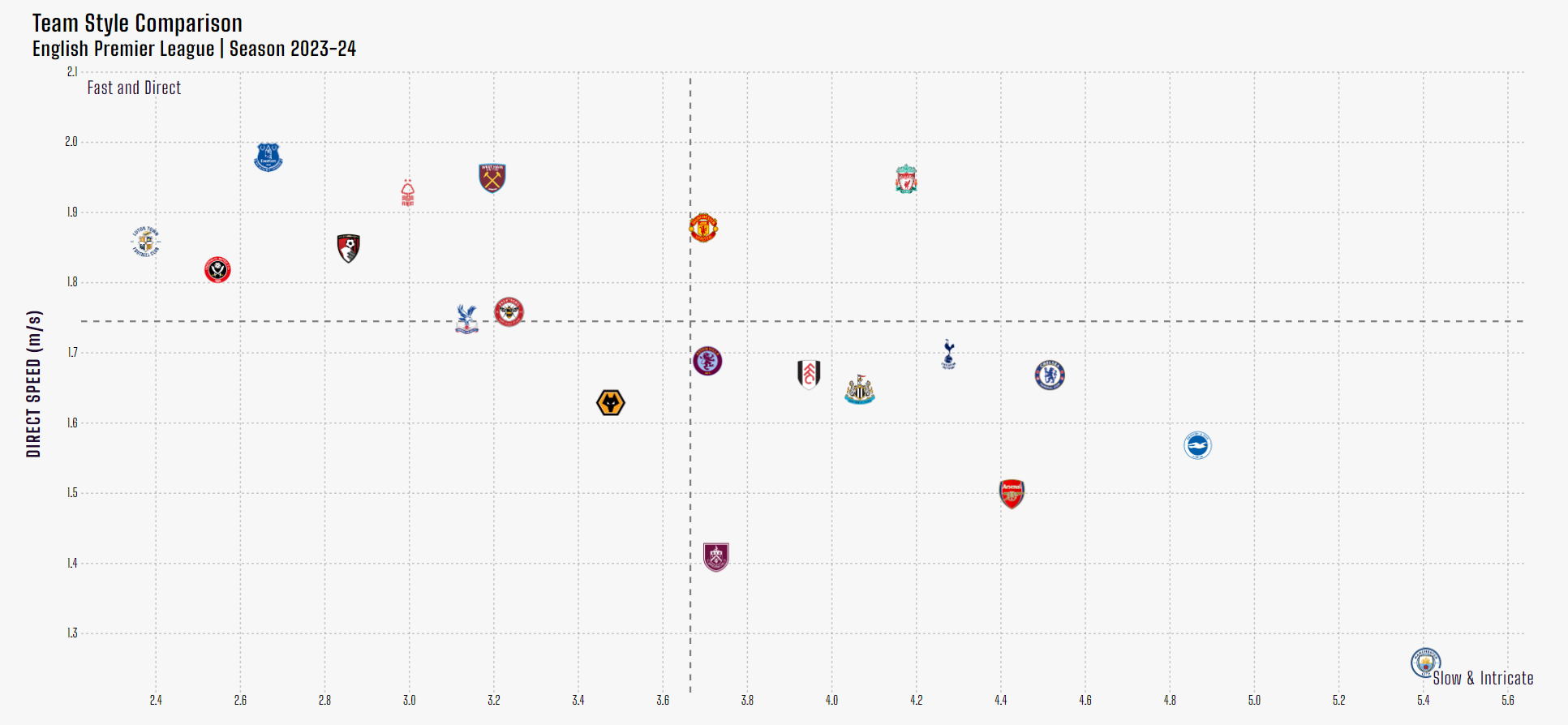
(Source: Opta Analyst)
The dynamic style has benefitted Liverpool’s offensive players as they thrive playing in a fast and direct system where space is more accessible – further reflected by the numbers as Liverpool ranks second for chances created (expected goals) while topping the league for direct attacks after nineteen domestic matches.
Liverpool’s directness paid off in their recent 1-1 draw against Arsenal when Trent Alexander-Arnold pinged a long ball from the defensive to the offensive third of the field for Mohamed Salah, who brilliantly dribbled past Oleksandr Zinchenko and leveled the tie.
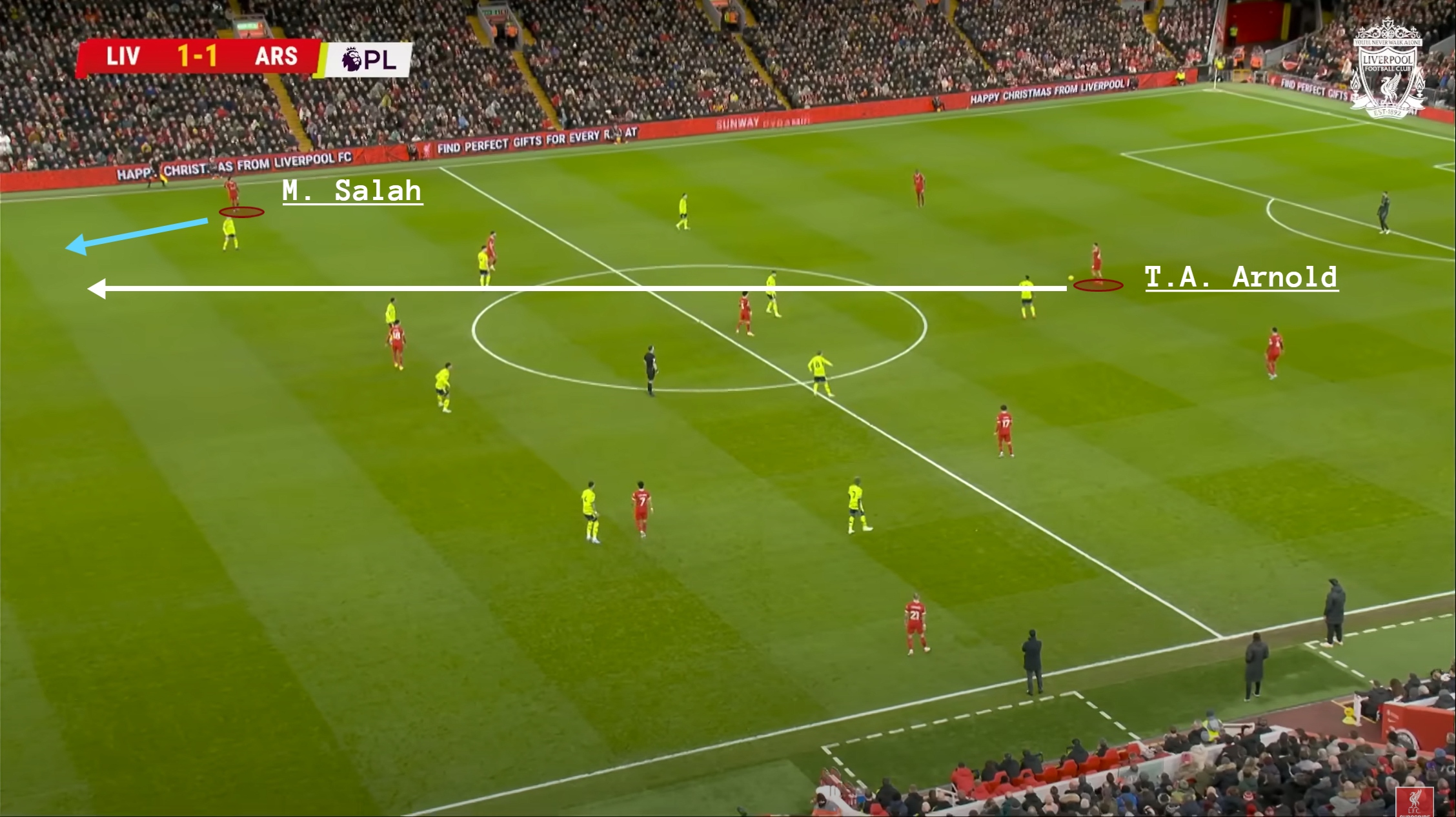
This approach was a theme from the start of the season. Against Chelsea, the opening goal commenced from a precise lofted pass from Alexis Mac Allister to Mohamed Salah, who crossed it to Luis Diaz to convert.
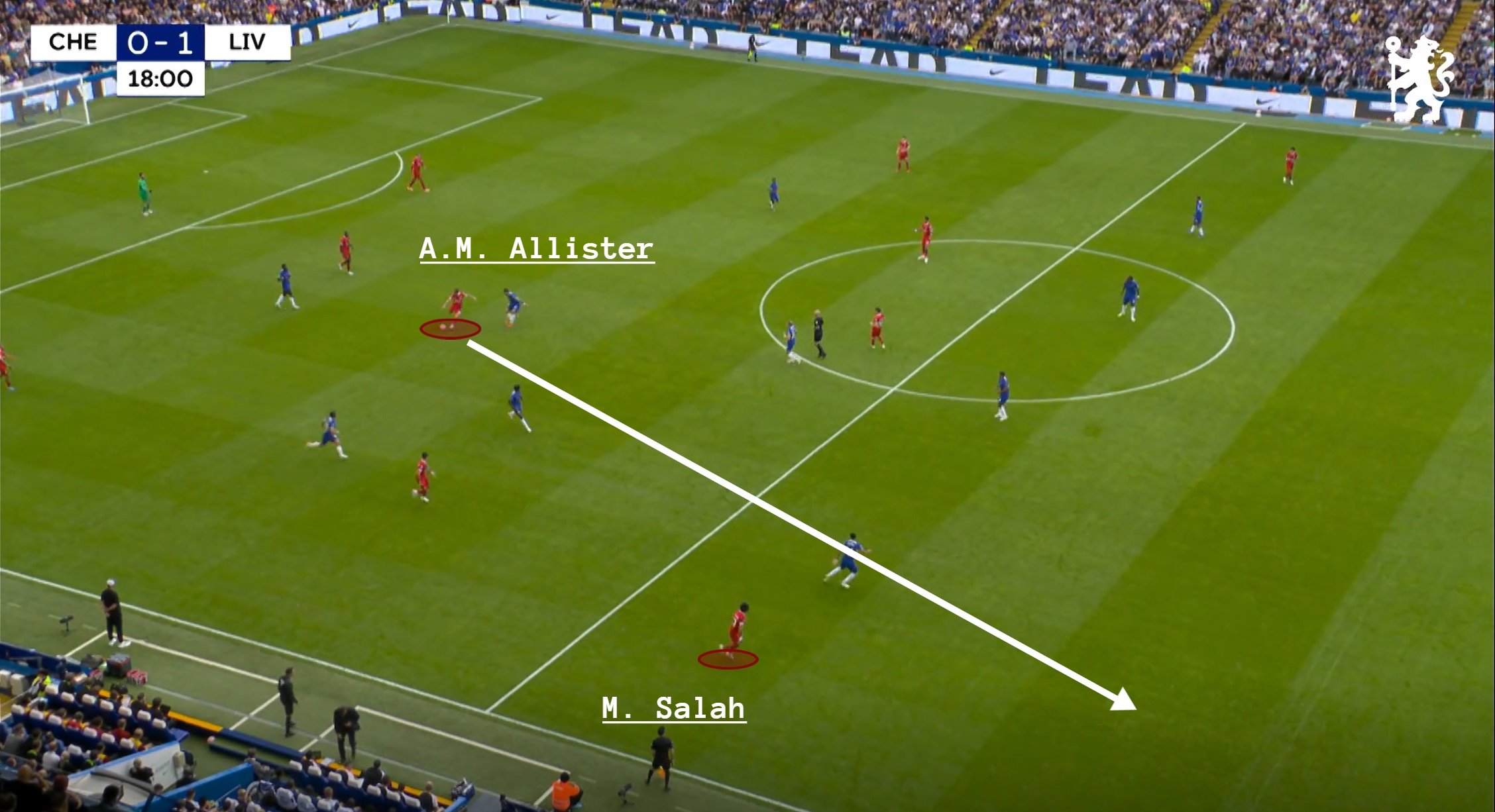
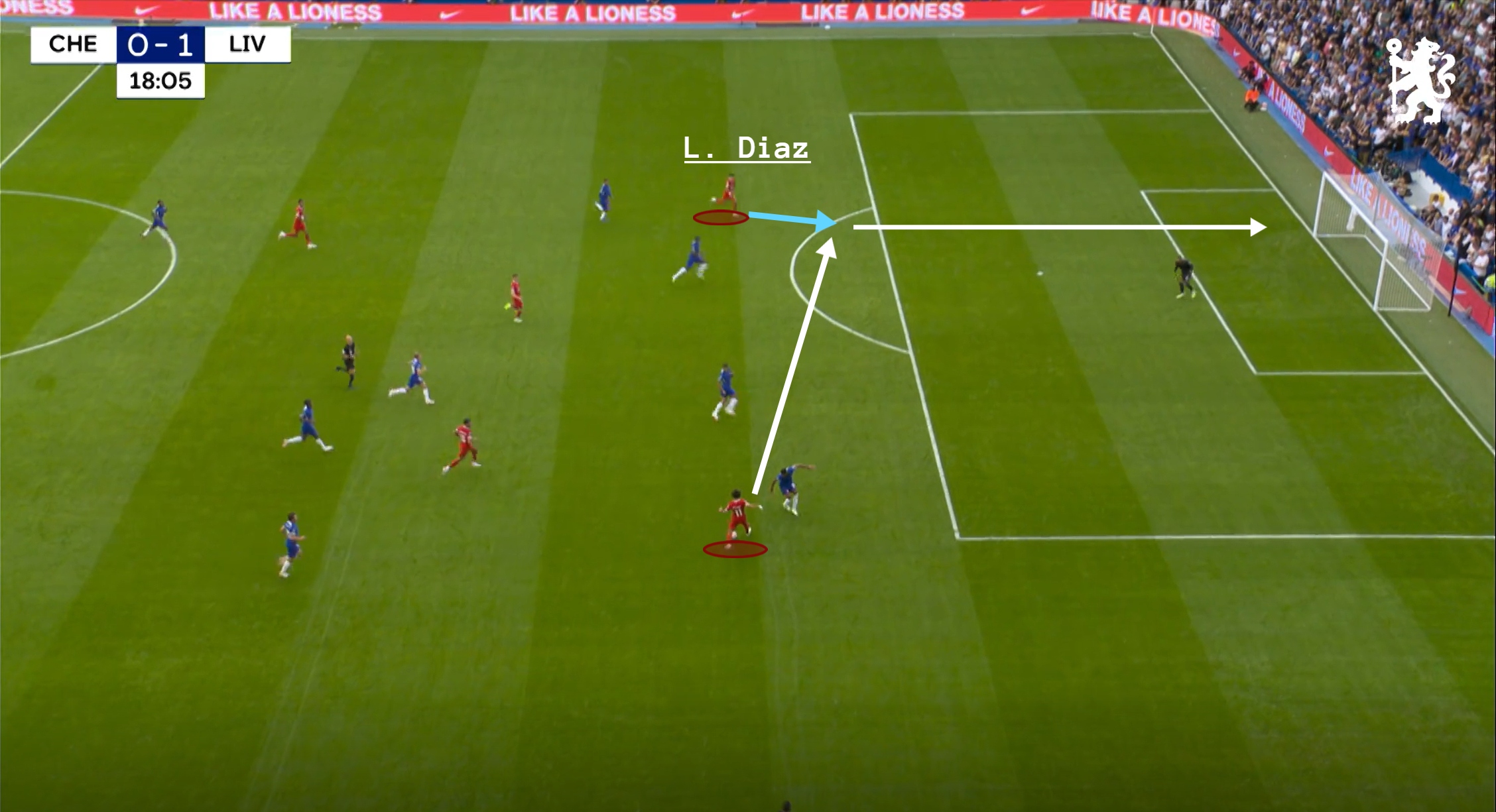
The straightforward Liverpool style has also encouraged players to take more long shots than in previous years. Although most top club managers may advise against this in the modern data-driven era of football, Jurgen Klopp seems to have incentivized his players to try their luck from afar if they have the chance more often than the norm.
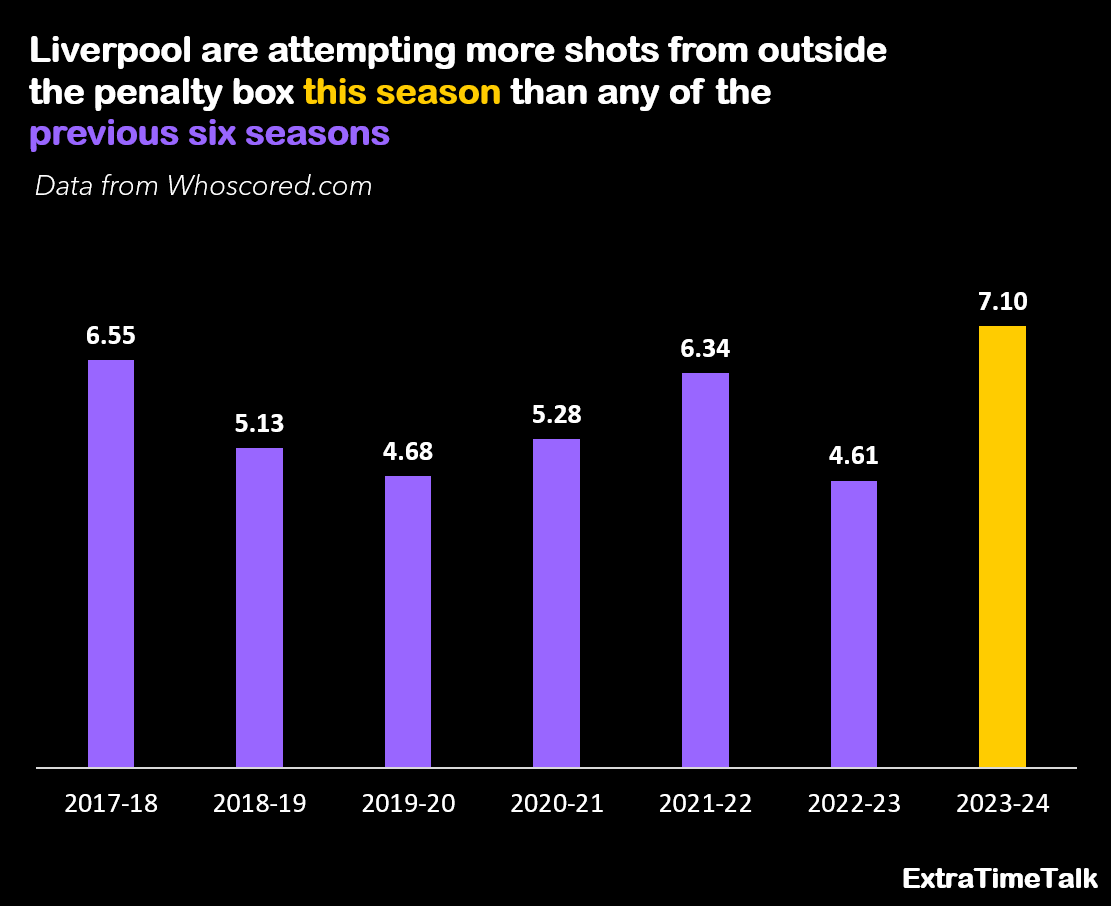
Whether that is Alexis Mac Allister’s screamer against Fulham in the Premier League or Dominik Szoboszlai’s pile driver in the Carabao Cup against West Ham, Liverpool fans have enjoyed a handful of stylish long-range strikes this season.
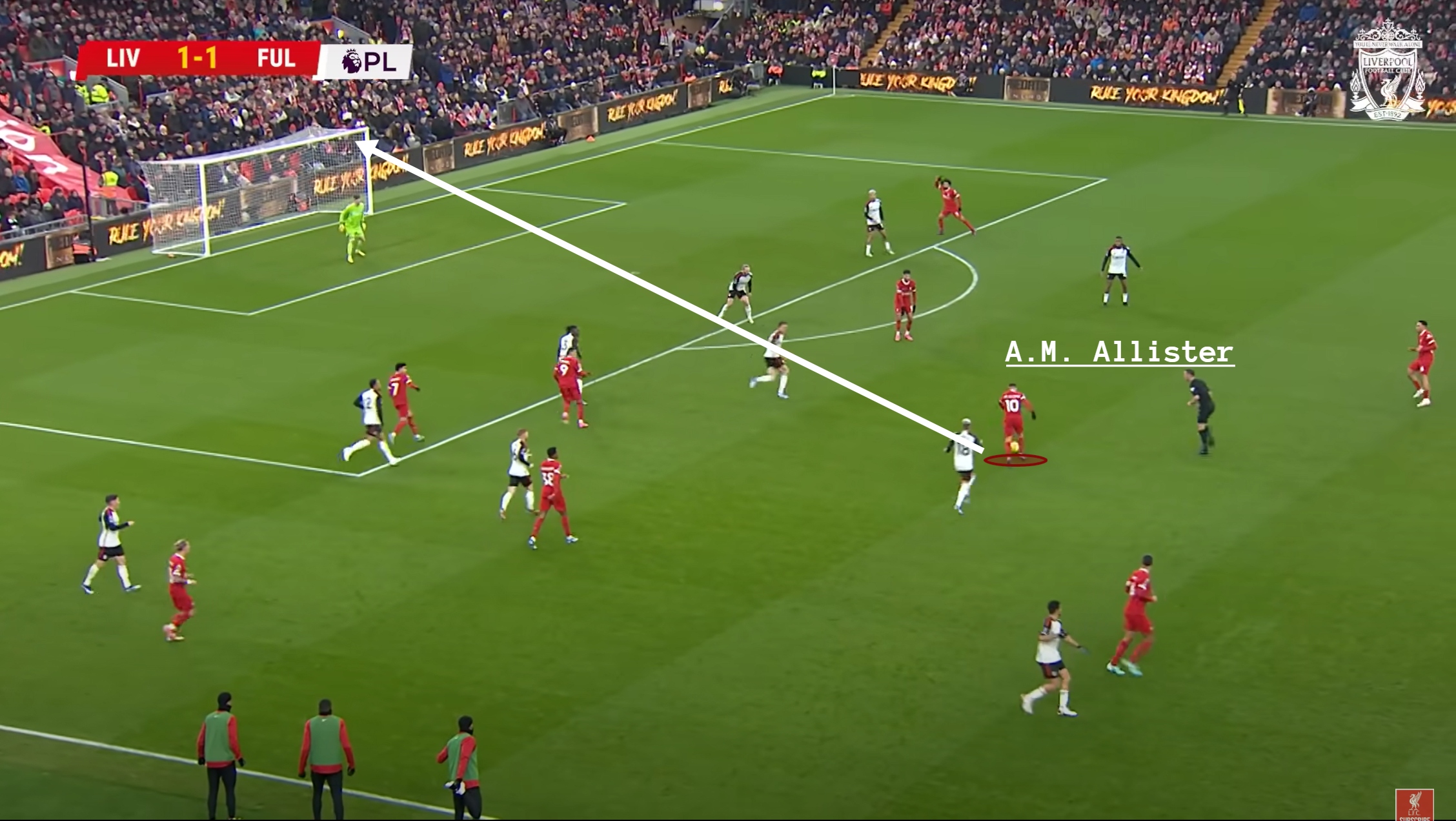
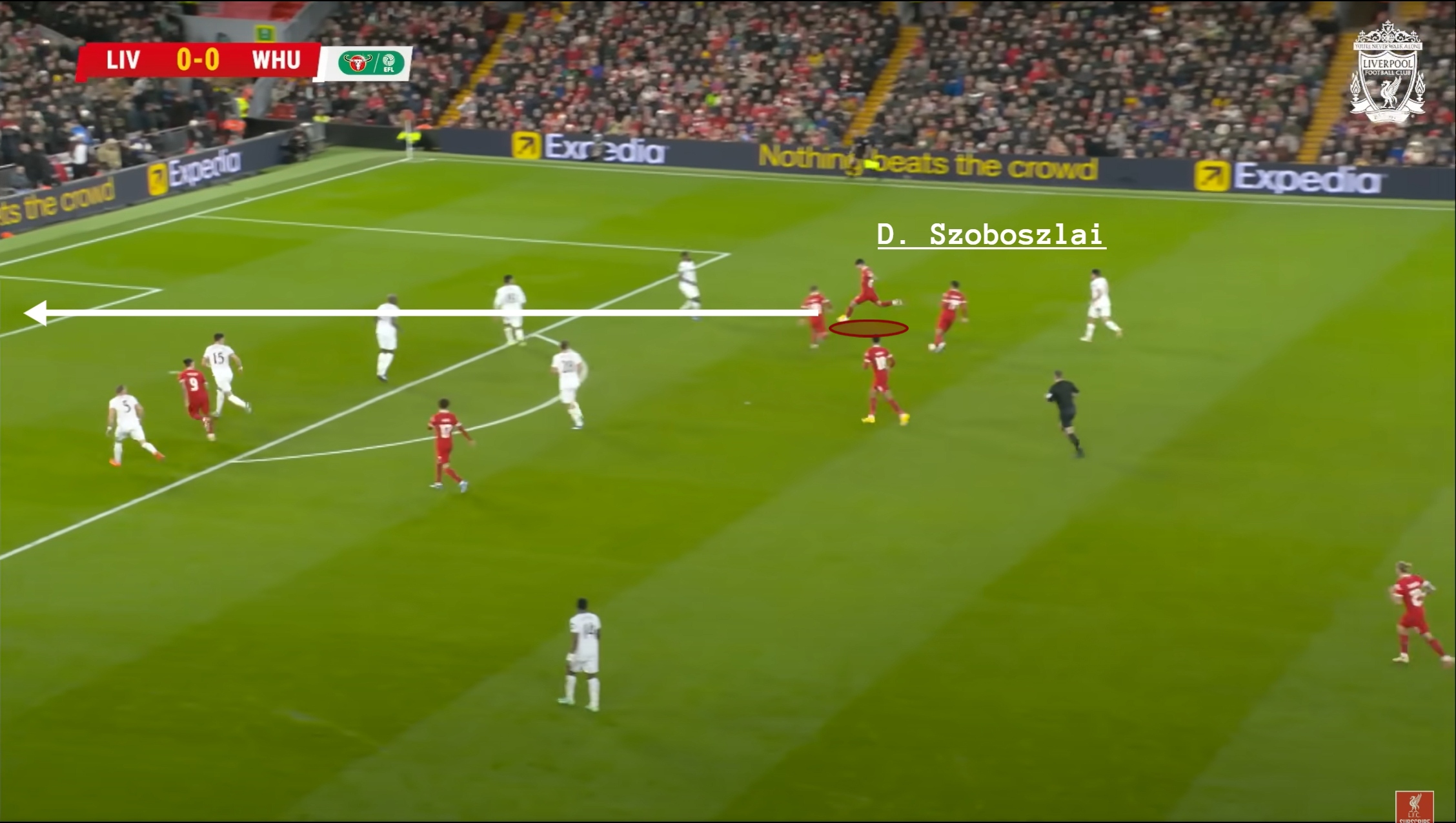
Defensive Gamble
Although the attacking upside of their system is clear, there were bound to be drawbacks, like any tactical system that football managers develop. With the latest rendition of Liverpool, the demerit of direct offensive moves is that it often leaves them wide open for counterattacks.
In an interview, Pep Guardiola once highlighted why he prefers shorter over more direct long passes: “I like when the passes are shorter. Because you miss fewer passes, and when you lose the ball by passing three meters, the transition (to counter-press) is always shorter, and it’s easier to get the ball back.”
“When you are at that (long) distance and you lose the ball and the gap is so big, you cannot control it. When you are here (shorter distance), you can pass the ball, and when you lose the ball immediately, you can make a transition.”
Since Jurgen Klopp is leaning on the long-ball approach, Liverpool is more susceptible to being disorganized upon a turnover than if they play shorter passes.
For example, in their match against Pep Guardiola’s Manchester City at the Etihad, Alisson attempts to catch the opposition off-guard by launching a pass quickly to the Liverpool attackers. However, due to a miss-kick, the pass does not cross the halfway line and falls kindly to Nathan Ake.
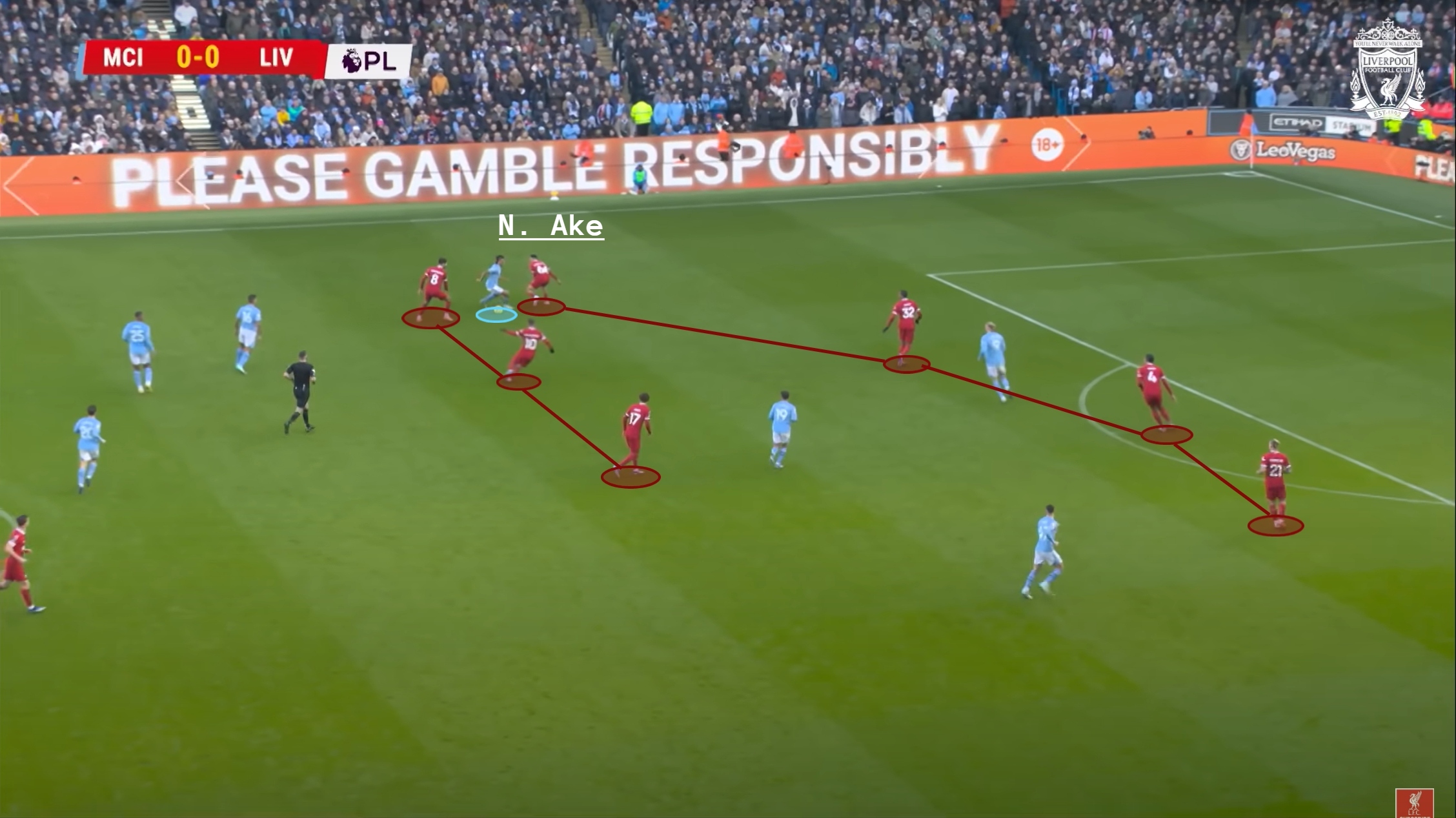
The defender skips past a few Liverpool defenders and finds Erling Haaland amongst an unorganized defensive structure, who buries his landmark 50th career Premier League goal.
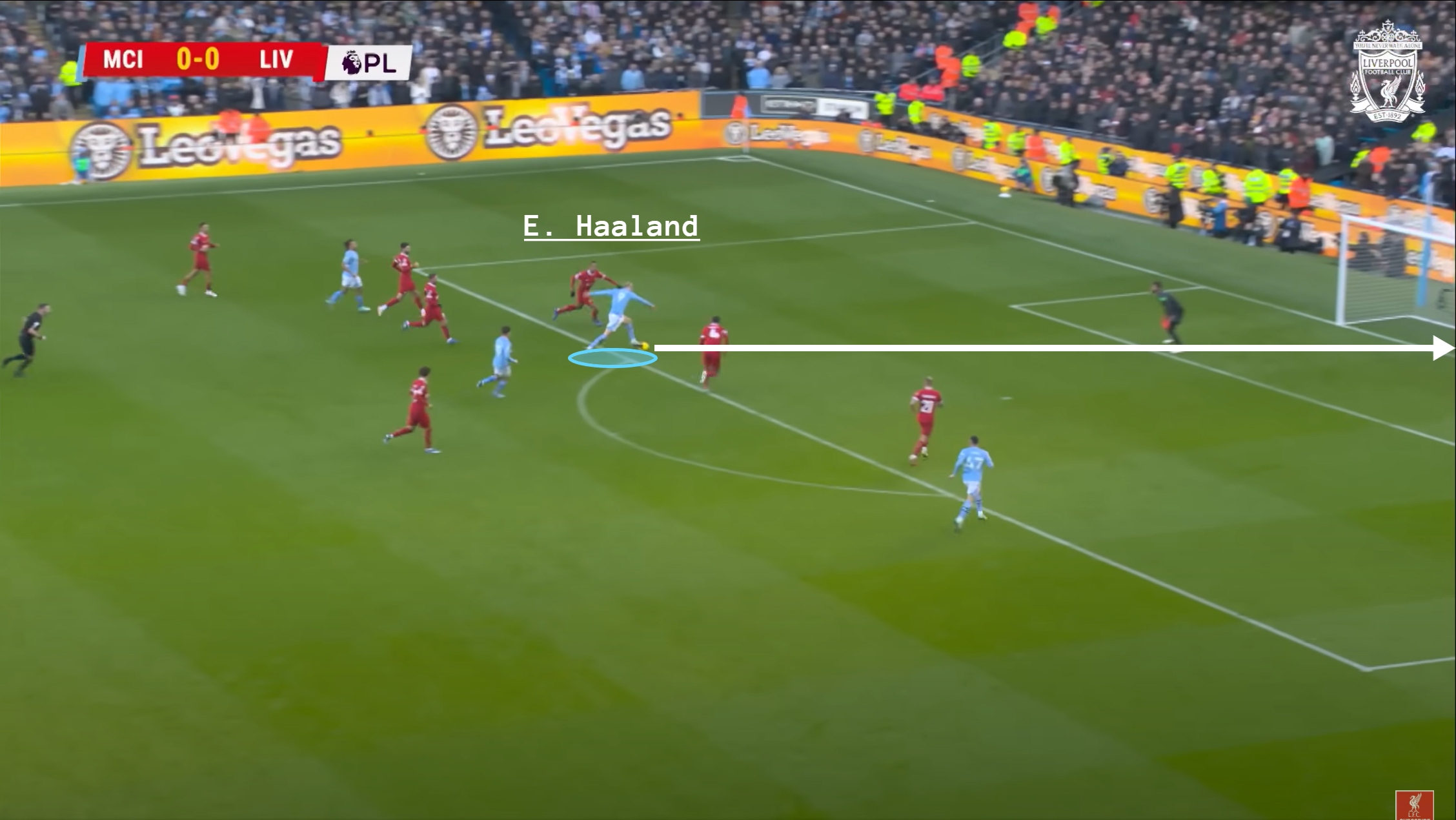
This issue was pertinent from the opening weeks of the Premier League campaign. In a match against Wolverhampton Wanderers, Liverpool lost possession in the attacking third after they tried to play quickly from a throw-in. After Craig Dawson lofted a clearance to the feet of Matheus Cunha, he played Pedro Neto out wide.
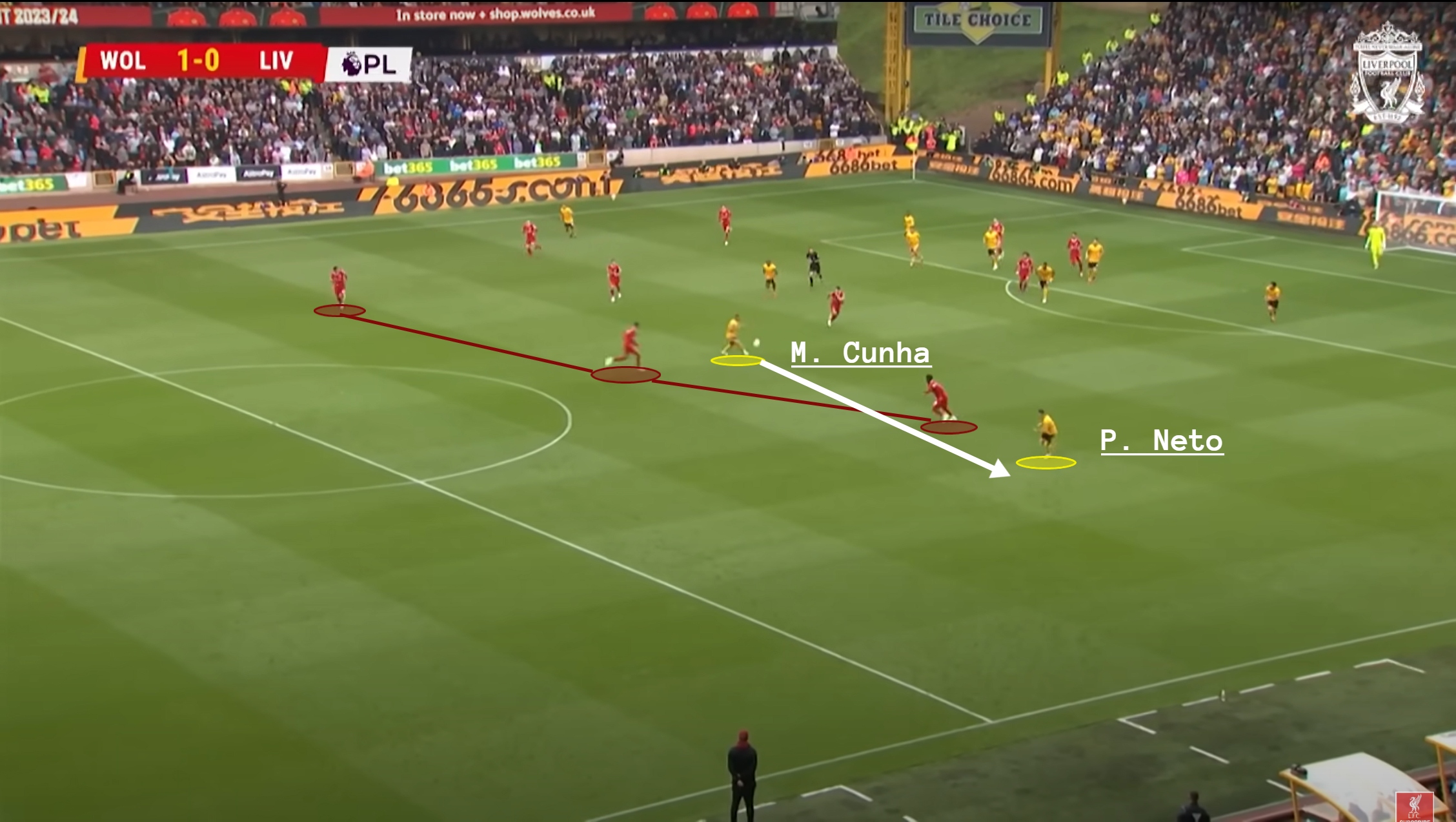
The Portuguese winger set off on a counter-offensive run against the disjointed Liverpool defense and glided behind them before assisting Hee-Chan Hwang to open the scoring.
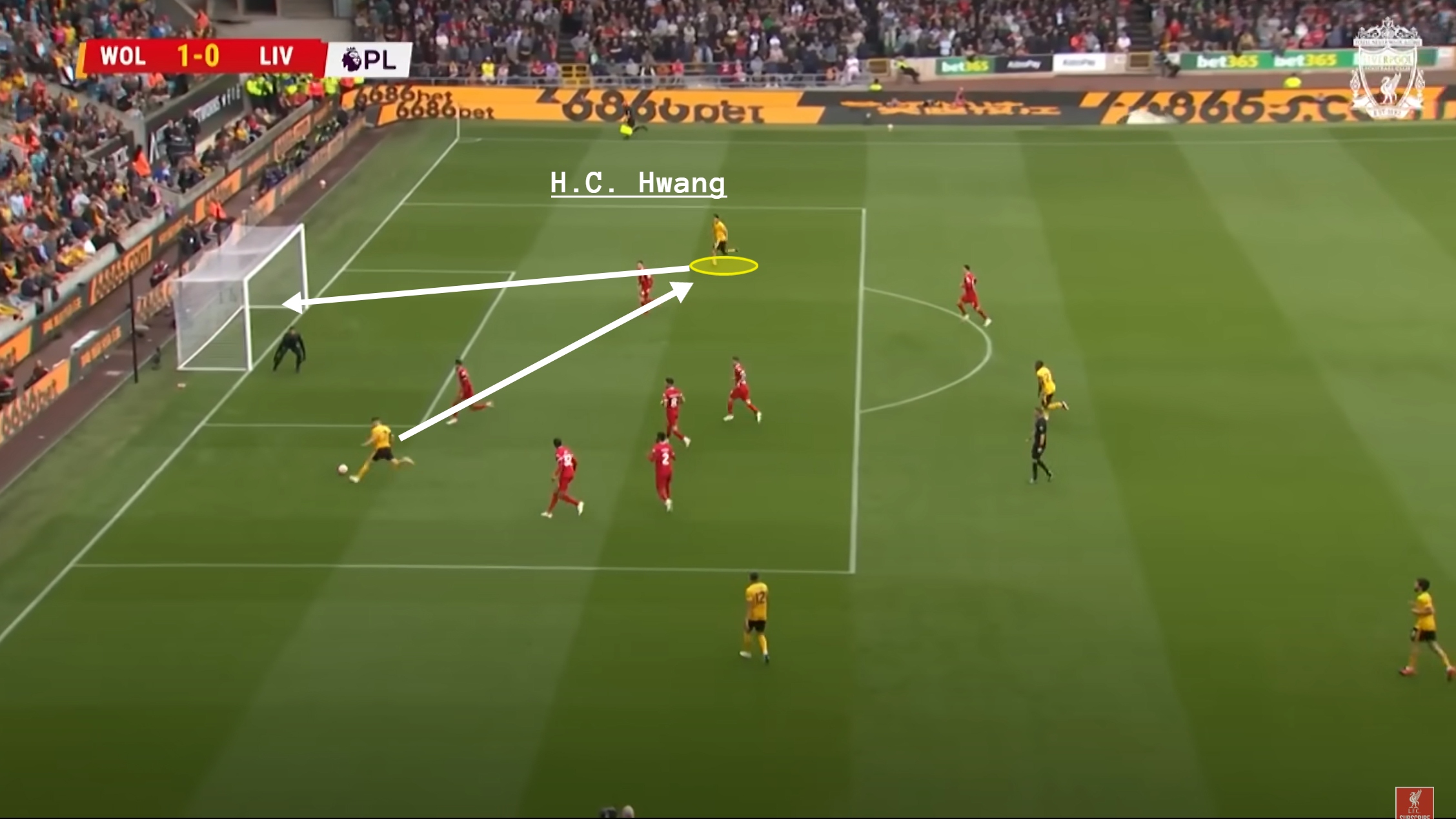
Nevertheless, these situations have been scarce for Liverpool, who have only conceded sixteen goals after nineteen matches – the best defensive record in the league.
However, the underlying expected goals against (xGA) data suggests some overperformance in this regard, as a combination of excellent goalkeeping by Alisson and poor finishing from the opponents have aided their sound defensive numbers.
If Jurgen Klopp wants to ensure their title charge remains, he will want to iron out a few defensive flaws to limit the number of goals his team concede moving forward.
Liverpool 2.0
Many have labeled the latest version of the team as “Liverpool 2.0” to reflect the mass squad rebuild they have endured over the past couple of years and their return to the very top of the Premier League after a turbulent 2022-23 season.
Jurgen Klopp has reverted to a variant of the style that brought his club success a few years back and now seems to have Liverpool competing for the title again.
Although we cannot certainly determine whether this run will continue with uncertainties like the impact of AFCON, potential injuries, and the Europa League will have on the momentum of the team, it is indisputable that they are entertaining.
The Reds last won the league when they were the entertainers with their heavy metal brand of football. Will Liverpool’s return to this style help them regain the title? Only time will tell.

